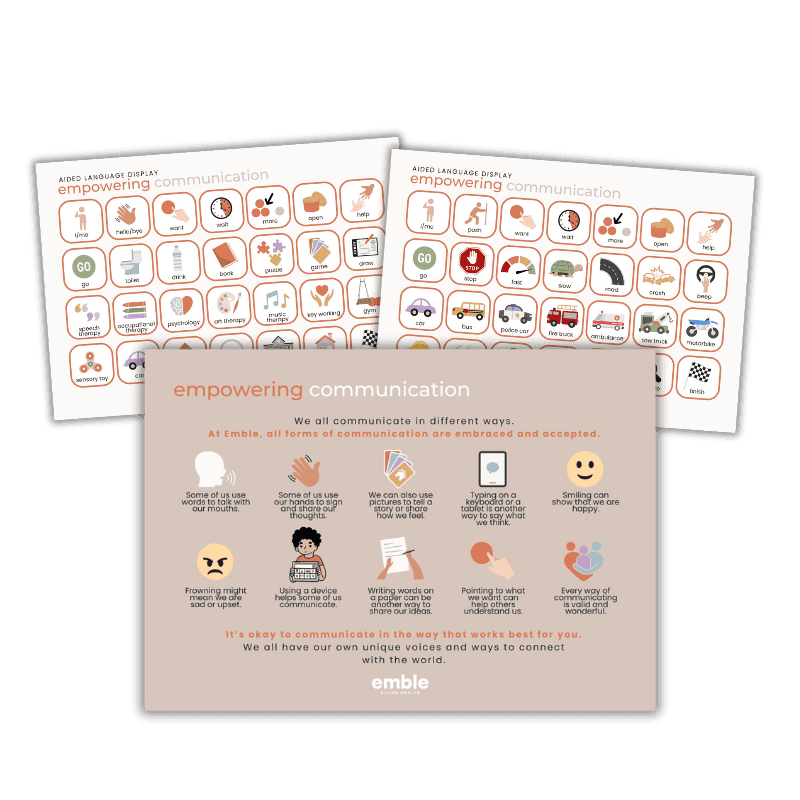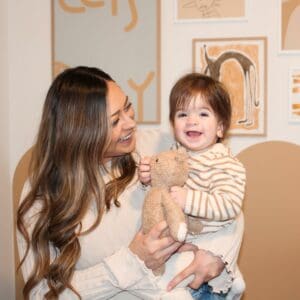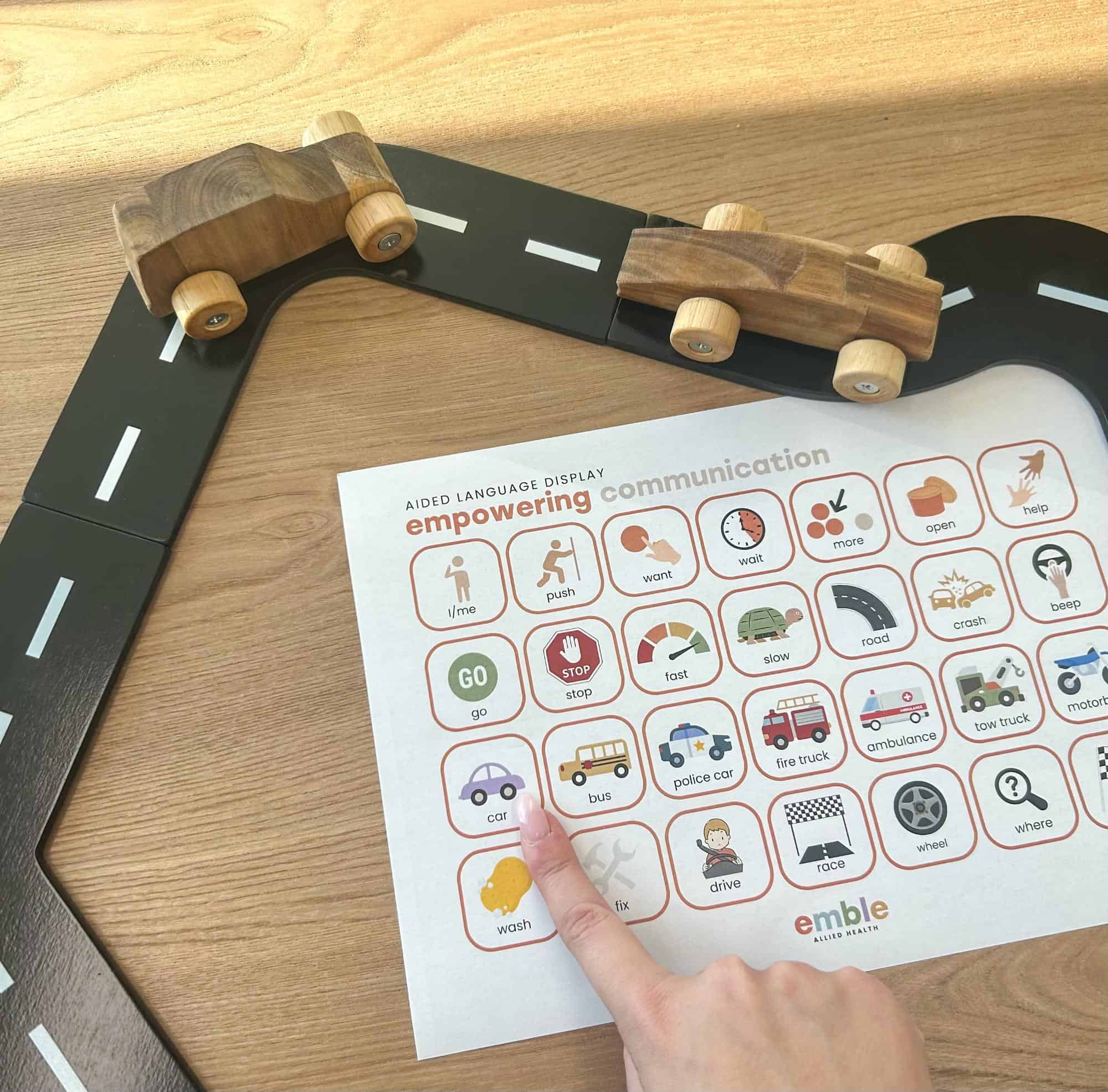As parents, you play a pivotal role in your child’s journey to effective communication. One powerful tool is the aided language displays (ALD), a symbol display where all the relevant vocabulary for a specific activity is showcased on a single page. This tool helps your child to communicate functionally while engaging in various activities.
At Emble, all forms of communication are embraced and accepted.
What is an Aided Language Display?
An aided language display is a visual representation of words using symbols, often organised by categories or activities. It serves as a communication aid for children. Each symbol corresponds to a word or phrase, making it easier for your child to express themselves.
How to Use Your Aided Language Display
To make the most of your aided language display, integrating it into everyday activities is crucial. Here are some strategies to help you get started:
- Modelling the Use of ALD: The cornerstone of using an aided language display effectively is modelling. When you use the display yourself, you provide a clear example for your child. For instance, while playing with cars, you can point to the symbols for ‘push’ and ‘car’ on the display and say, “let’s push the car”.
- Use Grammatically Correct and Complete Sentences: When modelling language with an ALD, remember to use complete and grammatically correct sentences, emphasising the key words in the phrase.
- Pointing to Key Words: While speaking, point to the relevant symbols on the display. This helps your child make connections between the words you’re saying and the symbols representing them. For example, if your child nods when asked if they want help, you can reinforce their response by pointing to the symbols for ‘want’ and ‘help’ and saying, “You want help.”
- Acknowledging Communicative Attempts: Celebrate every attempt your child makes to communicate, whether it’s through gestures, sounds, or pointing to symbols. Reinforce their efforts by pointing to the corresponding symbols and repeating their message. This not only validates their attempt but also encourages them to keep trying.
- Model and Wait: Give your child time to respond after modelling. Their response might be verbal or non-verbal, such as pointing to a symbol, nodding, or making a sound. Be patient and acknowledge their attempts, fostering a supportive environment where they feel encouraged to communicate in their own way.
Resources





